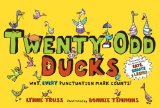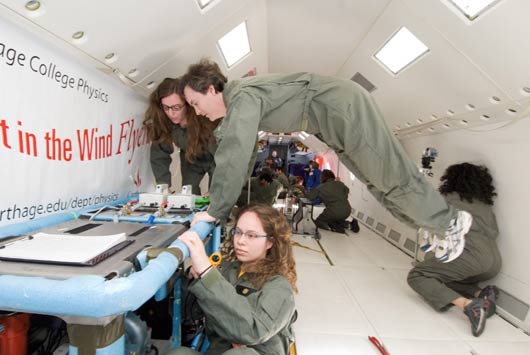A good example of misuse of tense
Present perfect, to be exact. First, a photo:
This long-dormant volcano erupted August 29, much to everyone’s surprise. After all, when your local mountain sits quietly for four centuries, you don’t exactly expect things to start jumping. It was so unexpected, even the news media got their English wrong. You knew I was going to get around to grammar, somehow, right? Here’s the quote:
As of Sunday afternoon, 50 tons of rice and 12,000 face masks have been supplied to temporary shelters.
This was written on Monday. Sunday is in the past. Since the time frame is explicitly in the past, the over-excited writer (and the editor!) should have used the past perfect, “…had been supplied…” Re-read the sentence with “had.” It reads smoother, doesn’t it? Harrumpf.
Please don’t think I’m trivializing a fairly serious event for the residents of the area. I am, however, keeping my promise to include more pictures in this blog’s posts.
Subscribe to this blog's RSS feed
I am about to plug a grammar book
Well, a punctuation book. The title of the book happens to feature one of my pet peeves, so I can’t resist plugging it, even though I haven’t read the book yet.
The peeve is hyphenated compound adjectives. Or rather non-hyphenated ones. When you combine two (or more) words to modify a noun, you hyphenate them so they stay together. If you don’t, the last of the words attaches to the noun, and you can get quite a different meaning. (You can get away without the hyphen if the words form a common combination and there is no possibility of misunderstanding.) So twenty-odd means approximately twenty, but an odd duck is a person with significant personality quirks. The hyphen or lack thereof tells your reader what you mean. So give the book a read for me, would you?
Speaking of grammar books, someone recently asked me about one that mentions uncommon verb forms, such as the periphrastic that forms the title of this post. I remember Mrs. Baird, my tenth grade English teacher, made us include “to be about to” in our verb declensions, and I haven’t seen it referred to since. Maybe it was the influence of the Greek, Latin, and Sanskrit in her background. She was an odd duck…
Anyway, look for a Grammar that’s at least three inches thick. That should have it all those verb forms.
A tip about tenses
The simple past and past perfect tenses confuse a lot of people, so here’s a little help. But first a little expostulation. Languages vary in how they do verb tenses. In German, they use the present perfect for the past, most of the time. In Hebrew, they don’t even have a present tense for the verb “to be.” If the verb is missing, you assume it’s a present tense of to be. In fact, the name for God, as far as we can tell is what would be the first person masculine present tense of to be, “I am.” We don’t know for sure how to pronounce it because that verb in Hebrew (and all other languages I’ve seen) is highly irregular, and besides, classical Hebrew was (still is) written without the vowels. And yes, Hebrew verbs show gender. A guy doing something is a different word than a gal doing it. (I know, you want an example. A guy saying “I love” would say something that sounds like “Anee ohayv” and a lady saying the same thing would say “anee ohevet.”)
Enough of the technical stuff about non-English.
Use the past when something happened in the past, period, especially if you mention the time. Use the present perfect if the thing happened in the past and continued until now. Use the present perfect progressive if something started in the past and isn’t finished yet. And use the past perfect if something happened in the past, continued for a while, then ended in the past.
Here’s an example of how not to do it, from NASA (or one of their fans) no less. I apologize for not having a screen shot–I collected this error before the post about having more pictures. I’ll make it up to you later.
NASA has created an “Astrobiology Roadmap” in 2008 that outlines pathways for research and exploration…
This describes the creation of the roadmap as a single event, so they should have said, “NASA created etc.” The present tense for “outlines” is okay, because the map still outlines the pathways, even though they created the map a while back. (Yes, some would argue that the effect of the creation continues to the present, and I would grudgingly grant them their point.) The issue is clearer if the writer had said something like “Last year NASA created…” Clearly past tense, on that one, eh?
So:
Here’s a rule of thumb: Try using the simple past tense. if it works, use it. Don’t bother with the present perfect.
Here’s a good use of the present perfect: You’re a kid, and Auntie Mabel comes over for a visit, and she gushes
My how you’ve grown!
Growing is something that takes place over time, so the present perfect is appropriate. What do you say as you slam your textbook shut? “I have finished my homework!” What so you say at supper an hour later when your parents ask yo about your homework? “Yup, I finished it.”
Past perfect: it took a while and ended in the past.
I thought I had been a diligent student, but then I met Don.
Lara had never been to A large department store until she came to the US.
Progressive. That’s the tense with ‘ing. It means that the action is still happening, or was still happening when something else happened.
He was singing operatically to himself when I came home.
I had been singing for two hours when you came home.
I have been hoping that you don’t mind if I sing in private.
Of course you can think of piles of examples, good and bad, and you can be alert for them as you read. Maybe you have an example to share in the comments. If you think about it for several minutes, you will have been about to make a comment before you actually did so. (That’s future perfect periphrastic, which we won’t get into.)
And since I didn’t copy the web page I got the NASA sentence from, here’s another NASA photo:
And for you guys who were hoping for a girlie picture, I created this link. It’s a picture of an astronette.
Hmm; maybe a slight change ahead
I’ve been thinking about that post two posts ago, about the badly written web page. It had a picture in it. Pictures in blogs are good. They add visual interest. I’ve been trying to think of how to make this blog more visually attractive. I think it’s an interesting blog, and reasonably well written; at least I get the occasional compliment, but it looks dull. All text. Plain old boring text.
My idea: Maybe I should take screen shots of bad writing I find on the web and use them to illustrate my posts. Posts with illustrations would certainly be more colorful than what you’re getting now, and maybe I’d get more than two readers (me and my daughter).
What do you think?
I suppose I could look for bad writing near girlie pictures. But then no one would read the articles.
More anti-fluff campaigning
Another example of that linguistic uselessness we call fluff:
… fitted with provision for a padlock to protect against any unauthorized tampering.
Two useless words here. Find them before reading on.
“Unauthorized” is easy to remove. Tampering, by definition, is unauthorized, so you don’t need to say it. You also don’t need “any.” Take “any” out. See? The meaning is the same. So our padlock is to protect against tampering, period.
Less work to read, better signal-to-noise ratio. Your readers will love you.




